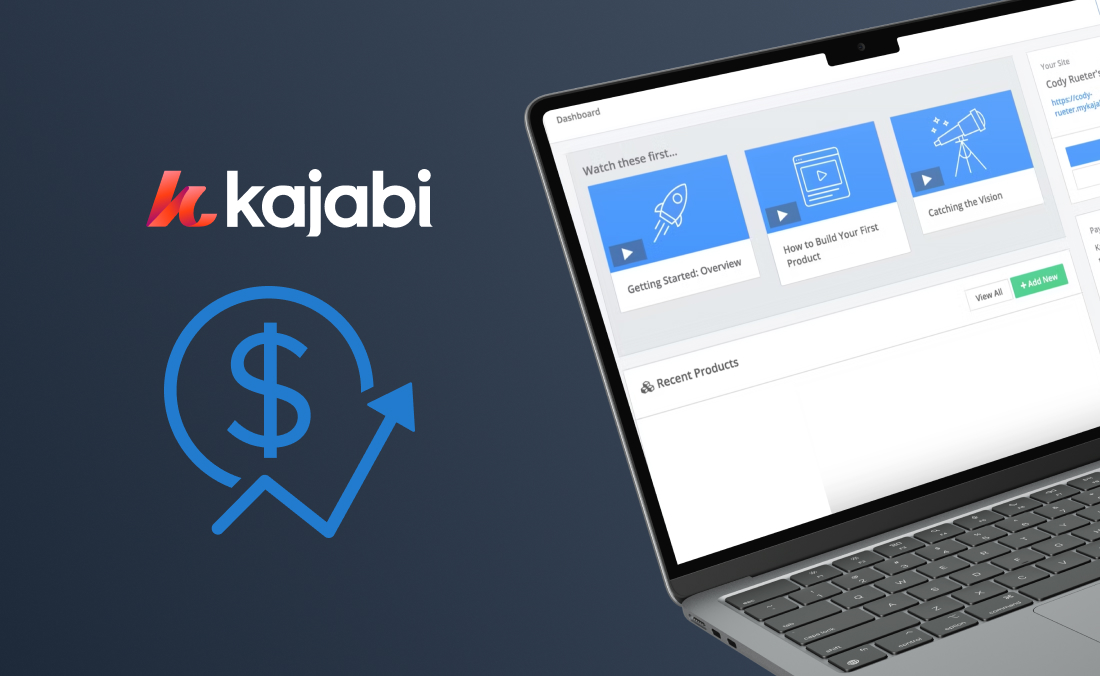Artificial intelligence (AI) has revolutionized many facets of our lives, and copywriting is no exception. With the advent of powerful AI tools, tasks like writing emails, website copy, and other marketing materials have become remarkably easy. AI copywriting tools are reshaping how businesses approach content.
Harnessing the Power of AI for Effortless Copy Creation
In a world of endless marketing demands, AI-powered tools are changing the way we write and create. If you have ever felt frustrated by the time-consuming nature of writing emails or web copy, this new technology will feel revolutionary. AI copywriting tools allow you to tap into the power of artificial intelligence and create high-quality copy in seconds. However, for those new to this technology, an understanding of how it works and how to get the best results can be daunting. Fear not! In this comprehensive guide, we’ll walk you through the basics of AI generation and provide you with valuable tips and best practices for crafting prompts that yield exceptional outcomes.

What is AI Copywriting Generation?
AI copywriting tools like ChatGPT or Google’s Gemini are called large language models (LLMs). These AI models have been trained on a staggering volume of data, enabling them to understand language patterns, relationships between words, grammar, and styles. These AI tools have become so capable they may even generate text that is often indistinguishable from human-written copy.
When you provide a prompt (an initial instruction or piece of text), the AI model generates a new copy based on your input and its vast knowledge base.
Understanding AI and What it Can Do for You
Think of AI copywriting tools as an extremely talented writing assistant who has in-depth knowledge of your topic of choice. To get the best results, you need to give this assistant clear directions. Here’s a simplified analogy:
You have an idea: It’s like deciding, “I want to write about our new product.”
You give instructions (the prompt): The prompt is like telling your assistant, “Okay, I need a friendly email introducing our new product, focus on how it saves customers time.”
The AI assistant does the work: Your AI tool will use its understanding of language and your instructions to draft a suitable email.
With an AI copy generator, you can:
- Generate email copy: Craft catchy subject lines, persuasive email bodies, and effective calls-to-action (CTAs).
- Create web page copy: Develop engaging headlines, informative product descriptions, and compelling website copy.
- And more: The possibilities extend to social media posts, blog outlines, scripts, and more.

How Does AI Generation Work?
- The Prompt: It all starts with your input. You provide a prompt containing instructions, keywords, and a desired tone of voice. This functions as a brief description of the desired copy that will serve as a guiding framework for the AI to generate text.
- AI Analysis: Once the prompt is provided, the AI model analyzes your prompt and draws patterns, associations, and contextual references from the vast knowledge base it was trained from.
- Copy Generation: Based on its understanding of your prompt, the AI begins crafting text. It uses its knowledge of language and your specific instructions to generate original copy that aligns with your goals. This generated text can range from short sentences to longer paragraphs, depending on the complexity of the prompt and the desired output.
- Refinement and Iteration: From there most tools will give you the option to refine the generated text further by providing feedback or tweaking the prompt. This iterative process helps fine-tune the output to meet specific requirements and preferences.

The Art of Effective Prompt Creation
The quality of your prompts directly influences the quality of the AI-produced copy. To achieve the best results from your AI tool, it’s vital to understand how to craft effective prompts. Think of your prompts as blueprints the AI will use to build your materials.
Prompt Generation Blueprint
1. Clarity is Crucial
Begin with a clear and concise description of your copy objectives. Avoid ambiguity by outlining specific goals, target audience details, desired tone, and any key points you want to convey. The clearer your instructions, the better your results. Instead of a vague prompt like “Write a blog about marketing,” try “Write a blog post explaining 5 ways AI can improve email marketing click-through rates.”
2. Contextual Framework
Context is key, providing sufficient context to guide the AI’s understanding of the subject matter is essential. Briefly introduce the topic, relevant background information, and any specific details necessary for relevance and coherence. Add details like “Target audience is small business owners” or “Our brand voice is friendly and informative.” An example is Kartra AI, which enables users to define these contextual insights within their business setting and then select their desired tone when generating a prompt.
3. Precision in Detail
Be precise and detailed in your prompt to facilitate accurate copy generation. Include relevant keywords, key phrases, and specific instructions to align the output with your objectives and preferences. Utilizing keywords will enhance the relevance and SEO-friendliness of your generated copy. Conduct keyword research to identify high-impact terms and integrate them seamlessly into your prompts.
4. Audience-Centric Approach
Craft your prompt with the target audience in mind, focus on their demographics, interests, and challenges. While the prompt itself is for the AI, it should encapsulate the audience’s needs and preferences. In doing so, you’ll ensure the AI-generated results are tailored, relevant, and resonate with the intended audience.
5. Tone and Style Alignment
Define the desired tone and style of the generated copy. Whether it’s formal, informal, professional, or conversational, specifying the tone helps maintain consistency and reinforces your brand identity.
6. Iterative Refinement
Don’t hesitate to experiment with different prompts and iterate on the generated output. Experiment with variations, analyze the output, and iterate for improved outcomes.
Bonus Tip:
If you’ve had success with something and want to recreate it, feel free to do so! For example, “Here’s an email we previously sent that was successful, using a similar style.” Then, you can expand on your objectives.
Example Prompts
When working with AI tools, the quality of the results you get hinges on the quality of your input – your prompts. Let’s see the difference between good and bad prompts in action:
Scenario: You want a blog post about pet adoption.
Bad Prompt: “Write a blog about pet adoption.”
Why it’s bad: This prompt leaves the blog’s angle entirely up to the AI. Is it a personal story? A list of tips? A call to action? There’s no way for the AI to know what style or focus to take.
Good Prompt: “Write a persuasive blog post encouraging first-time pet owners to consider adopting from a shelter. Emphasize the rewards of adoption and address common concerns (cost, existing pets, etc.).”
Why it’s good: This provides a clear structure (persuasive blog post), a specific audience (first-time pet owners), and points to address within the writing (emphasize the rewards of adoption and address common concerns).
Scenario: You want a product description for your website.
Bad Prompt: “Write a product description for my handcrafted jewelry.”
Why it’s bad: This doesn’t offer any guidance on style or tone. Is the jewelry delicate and minimalist or bold and statement-making? Without knowing your brand voice, the AI might produce something unusable.
Good Prompt: “Write a whimsical and playful product description for my handcrafted beaded earrings inspired by nature. Mention they’re lightweight and perfect for summer.”
Why it’s good: This gives the AI stylistic cues (‘whimsical’, ‘playful’), outlines practical information (‘lightweight’), and even provides a seasonal angle (‘summer’).

Essential Tips and Best Practices for Success
In addition to crafting effective prompts, adopting best practices can further enhance the efficiency and quality of AI generated copy. To get the most out of your AI copywriting tool, use these strategies:
- Start Small, Then Expand: Start with simple prompts to create more straightforward copy like emails or social media posts. As you become more comfortable, gradually increase complexity and try longer projects. Refine your prompts over time as you learn what works best.
- Inject Your Brand Voice: The AI can mimic styles, but add a human touch to ensure your results reflect your company’s personality and always tailor your prompts to resonate with your target audience.
- Don’t Forget Human Editing: While AI is powerful, even the best AI can make mistakes, a human’s touch for fact-checking, nuance, and style is still valuable. Supplement AI-generated copy with human creativity and expertise. Incorporate personal insights, storytelling elements, and strategic thinking to enrich the final output.
- Stay Updated: AI technology evolves rapidly, so stay informed about the latest advancements and updates in AI tools to leverage new features and capabilities effectively.
- Feedback is Your Friend: When available, rate or provide feedback on the AI’s output; this helps the tool learn your preferences and improve over time.
- Focus on Quality and Monitor Performance: Prioritize meaningful content rather than simply aiming for word count. Track the performance of your content through engagement metrics, user feedback, and conversion rates. This feedback loop allows you to refine your prompts and strategies for better results.
A Note on Originality and Inspiration
While AI tools are remarkable, they shouldn’t completely replace human creativity. Use them as powerful assistants. Here’s how to strike a balance:
- Brainstorm and Outline: Sketch out your main ideas and structure before using the AI tool.
- Spark Creativity: AI generation can provide fresh angles and new ideas to jumpstart your writing.
- Never Plagiarize: Always check for any unintentional copying and ensure the copy is unique.
Crafting powerful prompts is both an art and a science, requiring creativity, precision, and a willingness to learn. As you embark on your journey into the world of AI copywriting, remember that every prompt is an opportunity to unleash your creativity and shape the narrative. With practice, perseverance, and a commitment to excellence, you’ll soon master the craft of prompt generation and harness AI’s transformative potential to create compelling, impactful writing that resonates with your audience. Embrace the journey, and let your imagination soar!

Embracing the Future of Content Creation
AI copywriting doesn’t replace human writers, rather, it’s a transformative tool that empowers everyone to become more efficient and innovative in their communication. By following the guidance in this article, you’ll be well on your way to effectively harnessing the power of AI to save time, streamline workflows, and produce excellent content.
The Future is Automated
AI integration is an exciting new step in your workflow. As you get familiar with this technology, you’ll unlock new levels of efficiency and productivity. Now, go experiment! Remember, the best way to learn is by doing. It’s important to note that not all AI models are trained on the most up-to-date data. As a result, many AI may have little knowledge of most recent events or may have hallucinations (responses that are incorrect, misleading, or nonsensical).
Conclusion: The AI Advantage – Yours for the Taking
AI isn’t magic… but it sometimes feels close! While it’s undeniably powerful, the best results come from a blend of AI’s abilities and your human understanding of your business. This partnership is how you’ll achieve truly exceptional results.
Kartra’s AI integration understands the nuance of your business. This understanding allows it to generate copy that perfectly represents your brand, saving you hours while giving your marketing a boost.
Curious to give it a try?
Ready to experience the power of personalized, contextually aware AI for your business? Get started with Kartra today and let the AI revolutionize your marketing!


